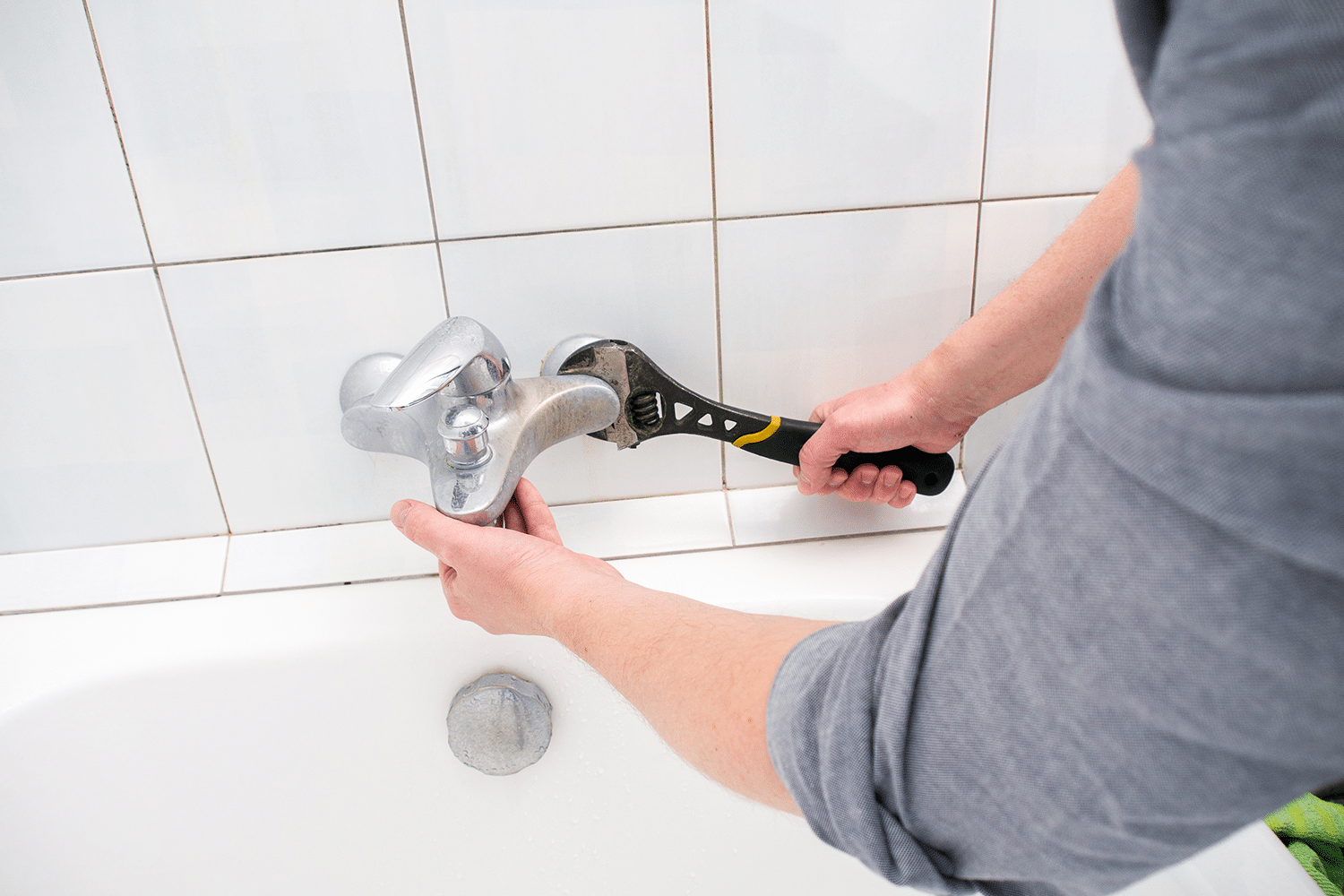This post which follows about What Causes Leaky Faucets & How To Fix Them is particularly engaging. You should see for yourself.

Dripping faucets might appear like a small aggravation, yet their impact goes beyond just the inconvenience of the audio. From drainage to sustaining unneeded economic prices and wellness threats, overlooking a trickling tap can cause different repercussions. In this short article, we'll delve into why it's crucial to address this usual house concern promptly and efficiently.
Wastefulness of Water
Ecological Effect
Dripping taps add substantially to water wastage. According to the Epa (EPA), a single faucet leaking at one drip per second can throw away more than 3,000 gallons of water per year. This not only strains water resources yet likewise influences environments and wildlife depending on them.
Step-by-Step Overview to Taking Care Of a Dripping Faucet
Tools Called for
Before attempting to deal with a leaking tap, collect the needed devices, consisting of an adjustable wrench, screwdrivers, substitute components (such as washing machines or cartridges), and plumber's tape.
Usual Faucet Issues and Their Solutions
Identify the kind of tap and the specific issue causing the drip. Typical issues consist of damaged washing machines, rusty shutoff seats, or damaged O-rings. Describe manufacturer instructions or online tutorials for step-by-step support on repair services.
Financial Expenses
Boosted Water Expenses
Beyond the environmental impact, trickling taps can pump up water expenses substantially. The accumulated wastefulness gradually equates into greater energy expenditures, which might have been avoided with prompt repair services.
Potential Home Damage
Additionally, prolonged trickling can result in harm to components and surfaces bordering the faucet. Water accumulation can create staining, deterioration, and even architectural issues if left ignored, causing additional repair service costs.
Health and wellness Problems
Mold and Mildew Development
The constant existence of dampness from a dripping faucet produces an ideal environment for mold and mold development. These fungis not just compromise indoor air quality yet additionally posture health dangers, specifically for people with breathing conditions or allergic reactions.
Waterborne Illness
Stationary water in leaking faucets can end up being a breeding place for germs and various other microorganisms, boosting the danger of waterborne illness. Contaminants such as Legionella bacteria thrive in stationary water, potentially resulting in major illnesses when consumed or inhaled.
DIY vs. Specialist Repair service
Advantages and disadvantages of DIY Fixing
While some may try to take care of a dripping tap themselves, DIY fixings include their very own collection of challenges. Without correct knowledge and devices, do it yourself attempts can worsen the issue or cause insufficient repairs, extending the trouble.
Advantages of Working With an Expert Plumber
Employing a specialist plumber makes sure that the underlying source of the dripping faucet is attended to properly. Plumbings possess the knowledge and devices to identify and fix tap concerns successfully, conserving time and decreasing the threat of additional damage.
Environmental Obligation
Private Contribution to Conservation
Taking responsibility for fixing dripping taps aligns with broader initiatives towards water conservation and environmental sustainability. Every person's activities collectively make a significant influence on maintaining precious resources.
Sustainable Living Practices
By focusing on timely repair work and taking on water-saving routines, individuals contribute to lasting living practices that profit both present and future generations.
Safety nets
Regular Upkeep Tips
To avoid dripping faucets, carry out routine maintenance such as cleansing aerators, examining for leakages, and replacing worn-out components promptly. Furthermore, think about installing water-saving devices or updating to extra efficient components.
Relevance of Prompt Repairs
Dealing with trickling taps as quickly as they're noticed avoids additional water wastefulness and prospective damages, inevitably saving both water and money in the long run.
Effect On Home Worth
Understanding of Well-Maintained Building
Keeping a residential or commercial property in good condition, including addressing upkeep concerns like leaking faucets, enhances its regarded worth and charm amongst potential customers or lessees.
Influence on Resale Value
Properties with properly maintained plumbing components, including taps, command higher resale worths in the property market. Dealing with dripping taps can contribute to a favorable impression throughout residential property evaluations and arrangements.
Verdict
Dealing with a trickling faucet exceeds plain benefit; it's a crucial step toward preserving water, minimizing economic costs, and securing health and wellness and home. Whether with do it yourself fixings or professional assistance, taking action to deal with trickling faucets is a tiny yet impactful means to advertise responsible stewardship of resources and contribute to a healthier, much more sustainable future.
How to Fix a Leaky Faucet: Step-by-Step Repair Guide
A leaky faucet may seem like a simple annoyance, but if it's not fixed promptly, that leak could cost hundreds to potentially thousands. From water damage to mold, mildew, and high water bills, even a tiny leak can be catastrophic if left unattended. Damage like this can even affect the overall value of your home, so it's important to take the right approach for leaky faucet repair. You may need the help of a plumber in some cases, but we've got a few tips you can try on how to fix a leaky faucet before calling the pros.
Four Faucet Types
When you're learning how to fix a leaky faucet, the first step is knowing what kind of faucet you're working with! There are four common types.
Cartridge Faucets
Cartridge faucets come in one- or two-handled varieties. In one-handled cartridge faucets, hot and cold water combines in a single cartridge. In the two-handled versions, hot and cold water are controlled separately and mixed in the faucet.
Ball Faucets
Ball faucets have a single lever you push up and down to adjust the pressure and rotate to change the temperature. A slotted metal ball controls the amount of water allowed into the spout.
Compression Washer Faucets
They're the oldest type of faucet, but they're still used in many homes — especially older ones. Compression faucets have two separate handles that, when turned, raise or lower the washer that seals a water valve. This valve stops water from flowing through the faucet when it is turned off.
Disc Faucets
Disc faucets rarely need to be repaired due to their maintenance-free design. The water flow is controlled by two discs — the upper one raises and lowers against a fixed lower disc, creating a watertight seal. If your disc faucet starts leaking, you may need to replace the seals or clean residue buildup from the inlets.
Fixing a Leaky Faucet
Step 1: Turn Off the Water
Whether you're learning how to fix a leaky bathtub faucet or how to fix a leaky kitchen faucet, always turn off the water supply to your working area when you're fixing a leak. The last thing you want is a flood added to your list of things to fix.
Look for the shutoff valves below your sink or around the tub and turn them clockwise to stop the water flow. If your faucet doesn't have shutoff valves, you may need to turn off the water for the whole house. Check to make sure it's off by turning the faucet on. If nothing comes out, you're ready to start the repair.
Step 2: Take Apart the Faucet
How you disassemble your faucet depends on the type of fixture you have. You can use a flathead screwdriver to remove the caps on top of the handle or handles for cartridge and compression faucets. Inside, you should see handle screws. Unscrew these with a screwdriver to remove the handle.
Disc- and ball-style faucets will typically have an inlet screw near the handle, and removing that will reveal the interior of the faucet.
Detach the Valve Stem
For cartridge- and compression-style faucets, you'll see the inner valve stem or cartridge once you remove the faucet handles. If you have a compression faucet, unscrew the brass valve stem. If you have a cartridge faucet, pull out the cartridge. If your cartridge has been in place for a while, it may require some tools or extra force to remove it due to mineral deposits.
Examine and Replace Parts
Once you've removed the parts, check them out to confirm what needs to be replaced. You may see corroded rubber washers, O-rings, stems, or cartridges. On a ball-style faucet, check the seats and springs for damage.
If you need to repair a leaky disc faucet, check the inlet and seals on the lower disc.
Once you determine what parts must be replaced, visit your local hardware store. Bring the damaged parts with you to ensure you can purchase the correct components to replace them.
Clean Valves and Faucet Cavity
If you've removed a stem or cartridge, you may notice mineral buildup in the faucet's threads. Use white vinegar to clean the valve seat by soaking it for a few minutes, then scrub it away with a soft toothbrush and rinse with warm water. You can also clean the interior of the faucet in the same way.
Reassemble the Faucet
Once your faucet is cleaned and the required parts have been replaced, it's time to reassemble it. Put the pieces back together and slowly turn the water supply back on. Doing this slowly is crucial because too much initial water pressure can damage the new hardware you've just installed.
https://homewarranty.firstam.com/blog/how-to-fix-leaky-faucet

Do you really like reading up on What Causes Leaky Faucets & How To Fix Them? Give a remark down below. We'd be pleased to see your thoughts about this blog post. In hopes to see you back again in the near future. Enjoyed reading our content? Please quickly share it. Help others discover it. Thank you for your time. Return soon.
 Devin Ratray Then & Now!
Devin Ratray Then & Now! Kirk Cameron Then & Now!
Kirk Cameron Then & Now! Mason Gamble Then & Now!
Mason Gamble Then & Now! Robbie Rist Then & Now!
Robbie Rist Then & Now! Atticus Shaffer Then & Now!
Atticus Shaffer Then & Now!